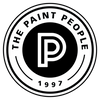Overview:
Ramuc EP Epoxy™ cures to a hard, tough durable finish, providing stain, chemical, and abrasion resistance for protection of concrete, plaster, and fiberglass swimming pools and spas or slides. EP Epoxy cures to a high-gloss finish with excellent coverage rates, especially on previously painted epoxy surfaces. Ramuc EP Epoxy has been a proven performer for more than 50 years and is also recommended for koi ponds and fountains. Because of their chemical cure, epoxies are the paints of choice for indoor pools. All epoxy films will chalk (break down from the UV rays of the sun and water chemistry) over a period of time. This is a natural degradation or “cleansing” of the top surface of the epoxy film. For compatibility purposes, the existing paint on previously painted surfaces of a pool or spa should be determined before painting. Aged plaster should be checked for integrity. Check for hollow or weak/crumbling plaster by using a ballpeen hammer or any other comparable method. Perform repairs to the plaster before painting.
Supplies Needed:
-
Cleaning Products:
• Ramuc Clean and Prep Solution™. An environmentally safe product that cleans, etches and neutralizes in lieu of the three-step process and a 3500psi power washer. -
Condensation Test Materials:
• Several 2’x2’ square pieces of transparent plastic
• Painter’s tape -
Abrasion Supplies to Create Medium Grade Sandpaper Finish:
#80 grit sandpaper, power sander, sanding blocks, wire brush
• Mohair or lambskin roller used for solvent based paints (no thicker than
3/8” nap) NOTE: DO NOT USE A ROLLER WITH CARDBOARD CORE
• Paint brush for detailing
• 5-gallon bucket for boxing (intermixing) paint
• Mechanical mixer; a paddle attachment for a power drill
• Ramuc Thinner for thinning paint if airless spraying and/or cleaning-up
tools and spills -
Joint or Crack Filler:
• Hydraulic cement or Vulkem 116 polyurethane sealant. Do not use silicone-based products as paint adhesion will be adversely affected. Vulkem 116 must be top coated before being submerged in chemically treated water.
Coverage:
• 175-200 square feet per gallon kit on bare, sandblasted, or rough surfaces.
• 400-450 square feet per gallon kit on recoats.
(Actual coverage will vary and is dependent upon the texture and profile of the
surface.)
• Minimum dry film per coat: 1.7 mils dry (2.9 mils wet)
• Maximum dry film per coat: 2.0 mils dry (5.7 mils wet)
• Pot life – use life: 8 hours (@ 70°F and 50% relative humidity)
• Clean-up: Ramuc Thinner
• Finish: High Gloss
Surface Preparation:
Plaster or concrete surfaces should be tested for integrity and soundness. Ramuc coatings are not a repair for weak surfaces. Any minor repairs, such as patching with hydraulic cement or filling of cracks, should be done and allowed to cure prior to surface prep. Follow the manufacturer’s recommendations.
Previously painted epoxy or bare fiberglass surfaces need to be abraded to a #80 grit profile. Power wash the surface to remove loose paint and dirt. Care needs to be taken when recoating epoxy surfaces to remove all tightly adhering residual chalk.
Prepare the surface thoroughly with Ramuc Clean and Prep Solution following the directions carefully. If the surface is exceptionally hard, we recommend sanding with a 60-80 grit sandpaper to create surface profile prior to applying the first coat of EP Epoxy.
CONDENSATION TEST – After all cleaning is completed, allow the pool surface to dry. Average drying times vary regionally and are dependent upon the porosity of the surface. It is recommended to wait 5 dry sunny days before performing a condensation test.
• Tape 2’x2’ pieces of transparent plastic to areas in the deep end wall, floor and several other areas of the pool.
• Wait about 4 hours to determine if condensation is formed underneath the plastic.
• If condensation is evident, the surface is NOT dry enough to paint.
• Remove the plastic and wait 24 hours to perform the test again. Repeat as needed until no condensation forms. This will ensure the surface is dry enough to apply paint.
Mixing:
Ramuc EP Epoxy pool paint is self-priming; no other type of primer is recommended or needed.
a. Mechanically mix Part A for approximately 5 minutes.
b. Mechanically mix Part B for approximately 5 minutes.
c. Mechanically mix both Part A & Part B together for approximately 15 minutes.
Allow the admixed paint to set for 20-45 minutes (induction time) prior to use at70°F and 50% relative humidity. At 65°F, the induction time is 45 minutes. Lower temperatures and higher humidity will affect the final cure of the coating. If mixing more than one kit at a time, intermix the kits to ensure color uniformity. Ramuc EP Epoxy has a pot life (USE LIFE) of 8 hours.
Application:
Using no thicker than a 3/8’ nap mohair or lambskin roller, apply the recommended coverage rate. Ideal air and surface temperatures for application are between 50° - 90°F. Overnight curing temperatures must be at least 50°F or the paint will not cure correctly, causing an “oily” feel to the top of the paint.
Do NOT paint if rain is imminent. Use dark colors for accent paint ONLY.
Cure Rates:
Outdoor pool: 5-7 dry days
Indoor pool: 10-14 days with adequate ventilation
If rain occurs during the curing process, allow an extra day of dry time for each day of rain. Rain or moisture can cause blistering, color blushing, and the finish could be affected.
Dry time to touch: 6-8 hours
To recoat: 16-72 hours. If second coat is applied beyond 72 hours, the first coat must be abraded/sanded prior to applying second coat.
Primer:
All Ramuc pool paints are self-priming. No primer required.
Compatiility:
Determine compatibility of existing paint on previously painted surfaces of a pool before painting. Use dark colors for accent painting only, as they may prematurely fade or blister, especially in chemically treated water.









